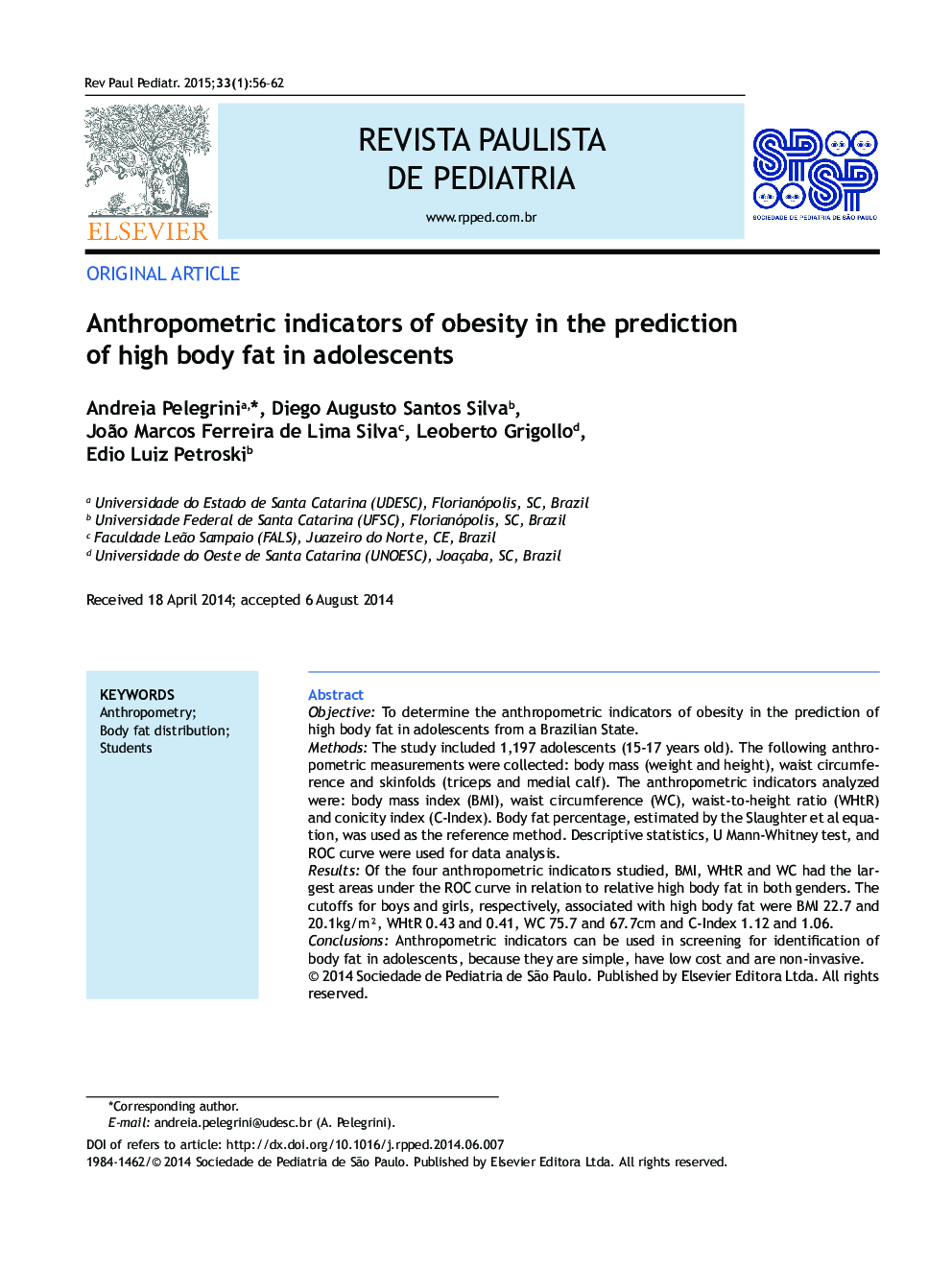| کد مقاله | کد نشریه | سال انتشار | مقاله انگلیسی | نسخه تمام متن |
|---|---|---|---|---|
| 4176240 | 1276240 | 2015 | 7 صفحه PDF | دانلود رایگان |
ObjectiveTo determine the anthropometric indicators of obesity in the prediction of high body fat in adolescents from a Brazilian State.MethodsThe study included 1,197 adolescents (15-17 years old). The following anthropometric measurements were collected: body mass (weight and height), waist circumference and skinfolds (triceps and medial calf). The anthropometric indicators analyzed were: body mass index (BMI), waist circumference (WC), waist-to-height ratio (WHtR) and conicity index (C-Index). Body fat percentage, estimated by the Slaughter et al equation, was used as the reference method. Descriptive statistics, U Mann-Whitney test, and ROC curve were used for data analysis.ResultsOf the four anthropometric indicators studied, BMI, WHtR and WC had the largest areas under the ROC curve in relation to relative high body fat in both genders. The cutoffs for boys and girls, respectively, associated with high body fat were BMI 22.7 and 20.1kg/m², WHtR 0.43 and 0.41, WC 75.7 and 67.7cm and C-Index 1.12 and 1.06.ConclusionsAnthropometric indicators can be used in screening for identification of body fat in adolescents, because they are simple, have low cost and are non-invasive.
ResumoObjetivoDeterminar os indicadores antropométricos de obesidade na predição da gordura corporal elevada em adolescentes de um estado brasileiro.MétodosO estudo incluiu 1.197 adolescentes (15-17 anos). Foram coletadas medidas antropométricas: massa corporal e estatura, perímetro da cintura e dobras cutâneas (tríceps e perna medial). Os indicadores antropométricos analisados foram: índice de massa corporal (IMC), perímetro da cintura (PC), razão cintura-estatura (RCE) e índice de conicidade (ÍndiceC). A gordura corporal elevada, estimada pela equação de Slaughter et al que foi usada como método de referência. Estatística descritiva, teste U de Mann-Whitney e curva ROC foram utilizadas para a análise dos dados.ResultadosDos indicadores antropométricos estudados, o IMC e RCE e o PC tiveram as maiores áreas sob a curva ROC em relação ao gordura corporal relativa elevada em ambos os sexos. Os pontos de corte para os rapazes e moças, respectivamente, associados com gordura corporal elevada foram IMC 22,7 e 20,1kg/m², RCE 0,43 e 0,41 e PC de 75,7 e 67,7cm e ÍndiceC de 1,12 e 1,06.ConclusõesOs indicadores antropométricos podem ser usados como ferramenta para identificação da gordura corporal em adolescentes, por ser um método simples, de baixo custo e não invasivo.
Journal: Revista Paulista de Pediatria (English Edition) - Volume 33, Issue 1, March 2015, Pages 56–62
